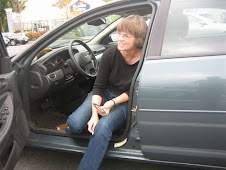I fancy myself as a compulsive organizer: I recently cleaned out my dressers and arranged my sweaters first by season/weight and then by color. Did the same with my bras, reminiscent of displays at Victoria's Secret. When I need to fall asleep on a restless night, I mentally go through the plants in my perennial garden alphabetically. And then, of course, there is the "logic" of this year's reading resolution to plow through a book about each state in the union. So, the idea of writing a chronological book about the Baltimore homicide detectives by a newspaper reporter who embedded himself into their division in 1988 appealed to me. Unfortunately, this mechanism doesn't work for me.
David Simon, writing the police beat for the Baltimore Sun, shadowed the city's detectives for a year of 234 murders. Despite listening a cast of characters in the front of the book, not many of them emerge with dimensions other than those of a cop. They, like the days and the deaths and perpetrators, with few exceptions, all merge together. Standing out only is an internal investigation of a detective who might have been shot by another officer and the never-ending interrogation of a suspected child murderer. Their efforts drone on with a "killing" daily rhythm. Crimes appear to be solved by a streak of luck. Doggedness and excellent crime solving skills are meaningless when district attorneys acknowledge the evidence is too complicated for the typical sub-par jury.
It is only when Simon pulls back to interpret what's going on that insights prevail: his analysis of how the cops use Miranda to their advantage. His recitation of rule number nine on the impossible odds of winning a prosecution is succinct: 9A "to a jury, any doubt is reasonable" 9B "the better the case, the worse the jury" and 9C "a good man is hard to find, but twelve of them, gathered together in one place, is a miracle." Given the time period covered, the squads are all male and Simon describes the bounding and lack of personal privacy that is cultivated in this camaraderie.
When I gave my reading list for the year to my boss to introduce him to my other life as an avid reader and blogger, the only book that appealed to him, the only one he read and enjoyed was Homicide. So maybe, like the western cowboy story I chose to represent North Dakota, this must be a genre that is more masculine than what I typically enjoy. Juxtaposed against the upper Michigan peninsula murder mystery, this true crime story emphasizes the mundane, boring work of policemen. It also does not give a unique sense of locality. Baltimore could be any big crime ridden city. It demarks a time, rather than a place. Subtitled, "a year on the killing streets" seemed almost to be composed in "real time" -- I had to renew the book several times to get through its almost 600 pages. I think I need to come up with an alternate for Maryland for the Slackers.
Sunday, October 18, 2009
Subscribe to:
Post Comments (Atom)



No comments:
Post a Comment